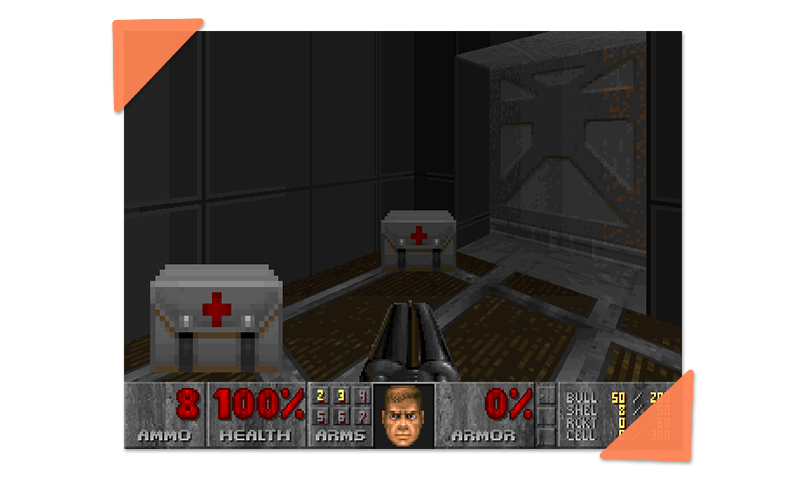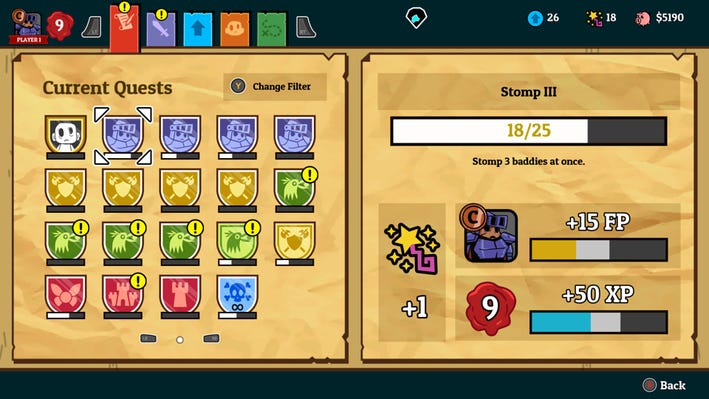Intro to Systemic Design
Here’s a fun thought experiment: Take any successful game from 10 or 20 years ago and try to assess its chance of success if it were released on today’s market.
As I wrote in my last article about Skull & Bones (which was secretly more about the evolution of AAA games), the consumer’s expectations have shifted throughout the years. Graphical fidelity set aside, what was considered hit-worthy back in 2004 would undoubtedly be deemed “too short” or “too shallow” in 2024. Since players have discovered the sweet taste of depth & freedom, they are less interested in linear missions and games that end as soon as the story ends.
If we set aside online experience, the genres that grew most in popularity are those that offer systemic experiences. What does this mean? How does a “systemic” approach enrich experiences? And how do we design it properly? That’s what we’ll see today, and I’ve found the ideal game to illustrate its principles.
System vs Systemic
First things first, let’s take a moment to clarify what “systemic” means. If you’ve read my Intro to Rational Game Design, you may notice some similarities: that’s because RGD is often a sub-discipline of systemic design.
A system is “a group of elements interacting with one another according to principles”. For instance, a democratic political system is a group of elements such as citizens, elections and laws and principles such as “voting” (where citizens elect representatives to more efficiently establish the regulations that will govern all the citizens).
Most aspects of a game can be “systems”: movement, combat, progression, or AI are some of the most common. Save is a system, user interface is a system. Video games are entirely made of systems because, by definition, they’re software created by people who coded principles to establish how elements interact.
However, “systemic” doesn’t just mean “featuring systems”; that would be too easy. In common game development language, a system is “systemic” only if it features significant interactions between its key elements, which have a major impact on the player’s experience.
For instance, “pressing a button to pick up a healing pack” is an interaction (button press) that involves elements (healing pack, and technically the avatar, too) and principles (refilling health gauge). Even if healing is crucial to succeed (major impact) in this example game, this mechanic isn’t “systemic” because “A → B” is a basic interaction, not a significant one. If the player had varied options (through a crafting interface, for instance), the pick-up might be considered systemic.
The systemic design usually correlates with two essential things:
An increased sense of simulation: that’s when the game makes you believe more in the logic of the virtual space. Traffic cars can run into one another, causing chaos and police to intervene.
Emergence happens when players can find interactions that the designers may not have directly intended. A problem has several solutions.
From the creator’s perspective, “systemic” is the opposite of “authored”: they delegate the player the responsibility of finding the best way to play the game. They make a solid systemic toolbox and trust players’ creativity and intellect to figure it out.
What Makes a Good System?
So, how do you create engaging systems? Lucky you, I’ve recently played the ideal game to illustrate the rest of this article: Nobody Saves the World from Drinkbox Studios (the makers of Guacamelee).
Nobody is a standard top-down RPG (think old-school Diablo or Zelda) with a unique hook: you can unlock 15 different characters (called “forms”) and switch from one another whenever you want to tackle the game’s challenges. There’s a tortoise that can go on water, a slug which leaves a poisonous trail, a magician and even a dragon! Each of these forms has unique gameplay rules; part of the fun is to unlock and discover new ones as you progress.
Switching forms isn’t a new concept in an adventure (Lego series) or platforming games (Super Mario), but associating it with the RPG genre is quite original. Moreover, it’s ideal for this article as the “form system” exemplifies the three pillars of a good system: simplicity, modularity, and interdependencies.
Simplicity comes first. The elements and rules of the system should be easy to understand, not because you want to trivialize the experience, but on the contrary, because you want the depth to emerge from players’ interactions. An unintuitive system isn’t fun and doesn’t spark creativity, so you’d better keep things as readable & consistent as possible. In Nobody, the controller’s buttons are the same for all characters, so switching is about discovering new abilities rather than getting used to new control schemes. The game also relies heavily on pre-existing player knowledge rather than inventing new things (animals, elements, names, etc.)
Then there’s the modularity. When elements and mechanics can be broken down into small, reusable components, you can combine them in infinite ways without exploding the production cost (that’s one of the goals of object-oriented programming). Nobody has over 100 character abilities, but they aren’t entirely unique if you look at their components.
“Hitting” is a component, and “dealing damages” is a component; that’s the Knight’s basic attack. The Monk has an entirely different ability: an area of effect mechanic that heals. But if you re-combine these separate elements, you get a hit that heals (the Mechanic’s repair ability) and an area that damages enemies (the Ghost’s basic attack). Thinking modular is the perfect way to maintain simplicity while offering tons of possibilities.
Finally comes the interdependencies. Modules are great when used to make varied abilities, but they become even greater when the player can create their own combination! In Nobody, passives typically add cause & effects with words such as “if” or “when”. If you use both the” when you hit, also applies the stunned status effect” and “enemies with a status effect applied take +30% damages”, you’ve created a new interaction between systems. As a player, designing their own “machines” (in this case, combat machines) isn’t just about picking the strongest abilities but also picking ones that interact with one another. It requires solid programming and careful attention to balancing from the creators, but the systemic experience feels fantastic when it clicks.
Toying with the System
If you recall the first part (it wasn’t that long ago), a game can feature well-designed systems without technically being a “systemic” experience. For instance, “car traffic” may be a simple, modular & interdependent system yet only serve as realistic background decor. The key to enabling systemic play is to design the experience to encourage players to interact with the systems. The worst thing that can happen to a designer is creating a great system full of possibilities only to see players use the same few tools throughout the game (thinking of you, Watch Dogs: Legion).
In Nobody, the team put a lot of effort into the variety of enemies and combat modifiers. Some forms have natural edges in some situations, and the damage-type system is a not-so-subtle way to force you to use specific attacks against certain enemies. Regarding movement, there are a few restrictions: you can go anywhere with anyone except for the few places requiring swimming, flying & using tiny tunnels.
The true genius of the game lies in its progression system: there’s the classic XP system to increase stats and unlock gated areas, but there are also Form quests that provide a progression for each form.
The first quests of a form are quick & easy, acting like a tutorial to teach the basic gameplay. Completing them unlocks another ability for the form, then quickly another again and maybe another form too. The progression pacing is quick enough that you stay engaged even if the gameplay of this particular character isn’t as interesting. This design approach works wonderfully to take the player out of their comfort zone (a character they’re used to and already have levelled up).
But anyway, chances are you’ll find yourself strangely addicted to what could be described as “a giant skinner box”, and you’ll want to level up all the forms to maximize the game potential. Another genius idea here is the form customization, which allows you to equip up to four active & four passive abilities. Two of them are locked, but you’re free to equip any other form’s ability for the others. Not only does it encourage theory crafting the most efficient build and identifying devastating combo, but it also encourages levelling up characters you don’t play, so their upgraded abilities help another build.
This design philosophy certainly required a ton of balancing work, but it works perfectly in the end. It is also supported by the “Custom quests,” which are mandatory to progress and require using (or sometimes figuring out) interesting synergies between abilities from different forms. Again, this contributes to the constant switching between characters: levelling up this one to unlock that ability, completing a quest with another one and then unlocking another ability, etc. It is a fantastic web of intertwined motivations.
Wrap Up
I usually like to end these articles with some bonus information, so I tried to contact the Drinkbox team to exchange with their designers, but unfortunately, I never got a reply. Lucky me, there’s an interview on Game Developer where Lead Designer Ian Campbell shares nuggets of design wisdom.
My favourite part is when he explains how the original vision was closer to an RPG. It allowed players to change form and abilities only at save points, so players must commit to a specific build before entering a dungeon (and if they fail, change and try again). However, they gradually realized it was frustrating and did not play to the game’s strengths, so they allowed players to change anything anywhere.
While it sounds obvious in hindsight, anyone who’s shipped a game can relate to the pain of not knowing whether to address feedback by doubling down on your original vision or abandoning it. And believe me, the correct answer isn’t always “stop being stubborn and accept the player’s suggestions”, so props to them for figuring it out!
















Great read as always!